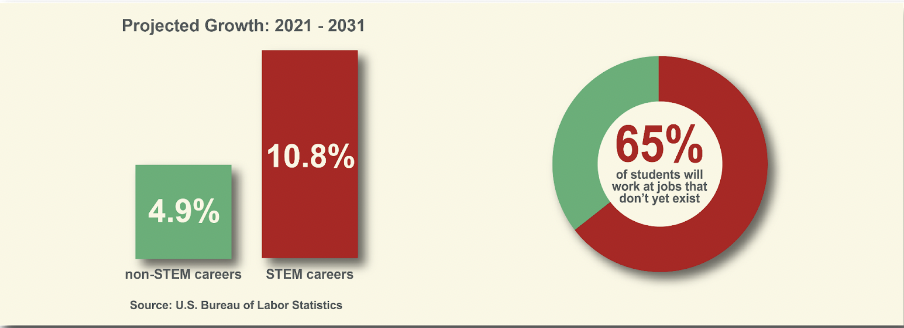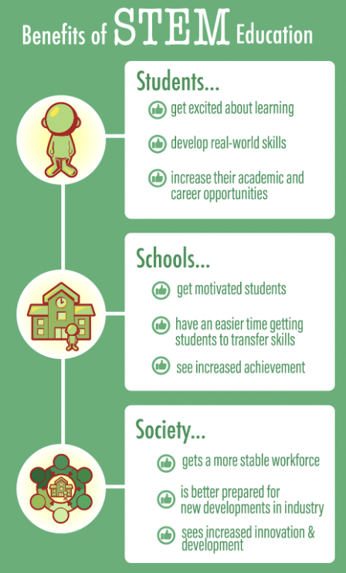
Math Assessment in California Schools: The Shift Toward Differentiated Instruction
Math assessment in California is changing. What used to be a compliance exercise or reporting tool is now becoming a...
STEMscopes Staff | Published December 14, 2022
The buzz around STEM education continues to grow as teachers discover how it builds creative problem-solving through connections to real-world applications.
There was a time when the National Science Foundation (NSF) talked about the disciplines of science, mathematics, engineering, and technology, their study, and the careers associated with them, collectively, with the unfortunate acronym SMET. Luckily, in 2001, biologist Judith Ramaley rearranged the letters to give us the much more pleasant-sounding STEM. (Imagine trying to encourage students to study SMET!)

Over the past few decades, interest in STEM education has grown considerably, not just because of the improved acronym. Although there are various benefits to STEM education, which we will cover below, we shouldn’t ignore the two important elements of context in education and society at large.
First, there has been a shift in how we approach subjects in school. Project Based Learning, for example, presents students with larger projects that require seamless integration of skills and knowledge from science, math, language arts, and other disciplines. This, of course, aligns with how we all use skills and knowledge in daily life. Just as importantly, it aligns perfectly with how STEM education is focused not simply on increasing students’ aptitudes in each of the separate subjects but also on helping them move effortlessly between each, using the appropriate knowledge and skills to become creative problem-solvers.
Second, since the industrial revolution, the centrality of STEM in our daily lives has increased enormously, and the pace at which we progress is getting steadily faster. Consider that the time between the Wright brothers’ first flight and the first moon landing was only 66 years! As our society and economy become increasingly dependent on a STEM-educated workforce, encouraging students to pursue STEM will not only prepare them to enter a growing and lucrative field. Still, it will also be beneficial to the nation and the world at large. It’s not just that opportunities in STEM careers are growing faster than non-STEM careers. The truth is that we can’t predict what careers will be available to most students by the time they graduate. That’s how fast things are changing. But one thing remains constant, society depends on STEM.

The discussion above describes the context that explains why STEM is important, but in making a case for STEM education, we can’t ignore the benefits it provides. These benefits have, of course, been discussed at length elsewhere. Rather than simply share the same list, let’s look at the advantages STEM education provides in what we might call nested spheres of influence, starting with the student, moving out to the school, and finally, further out to society.
Let’s begin with the unique benefits of STEM education to students. What are the benefits provided to kids by STEM education that would be helpful even if schools and society did not exist? We can summarize them as follows.

Most importantly, relax and have fun! Many of you have grown up in a STEM-rich environment and are entirely on board with the movement. For others, STEM still seems new and, perhaps, intimidating. If you are in the latter group, don’t worry. One of the great things about STEM is that it creates for itself exactly those innovations that make learning about it easier and more fun! And, as the movement grows, you’ll have a larger group of friends who can help you along the way.

References:
Omoth, T. (2022, June 13). 9 soft skills employers are looking for in 2022. TopResume. Retrieved November 28, 2022, from https://www.topresume.com/career-advice/6-soft-skills-employers-are-looking-for
Thelwell, K. (2019, May 31). The role of STEM in developing countries and potential benefits. The Borgen Project. Retrieved November 28, 2022, from https://borgenproject.org/stem-in-developing-countries/
U.S. Bureau of Labor Statistics. (2022, September 8). Employment in STEM occupations. U.S. Bureau of Labor Statistics. Retrieved November 28, 2022, from https://www.bls.gov/emp/tables/stem-employment.htm

Math assessment in California is changing. What used to be a compliance exercise or reporting tool is now becoming a...

You know the moment: a student’s eyes light up when the science experiment fizzes or the math puzzle helps them...

STEM classrooms are full of different types of learners in the classroom, each with their own strengths and needs.
...